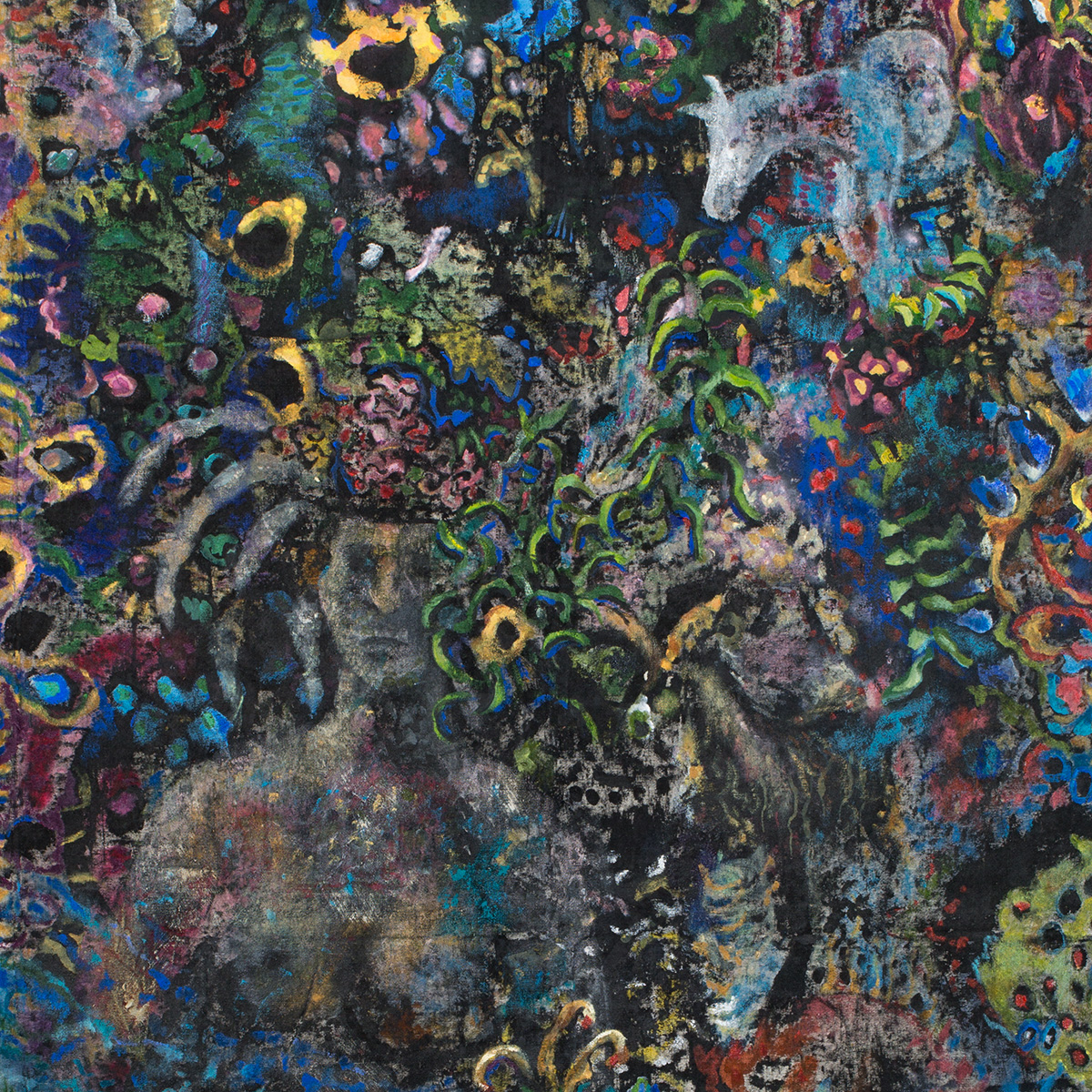
The Portals Tapestries
Many of the best artworks I have made started with a happy accident. The entire Tapestries series started one day when my art group—Art Safari—decided to work big. Really big. We had been inspired by the large work (almost 12 feet high) of Hilma af Klint (Paintings for the Temple, painted 1907-1915.) Like Hilma, we […]
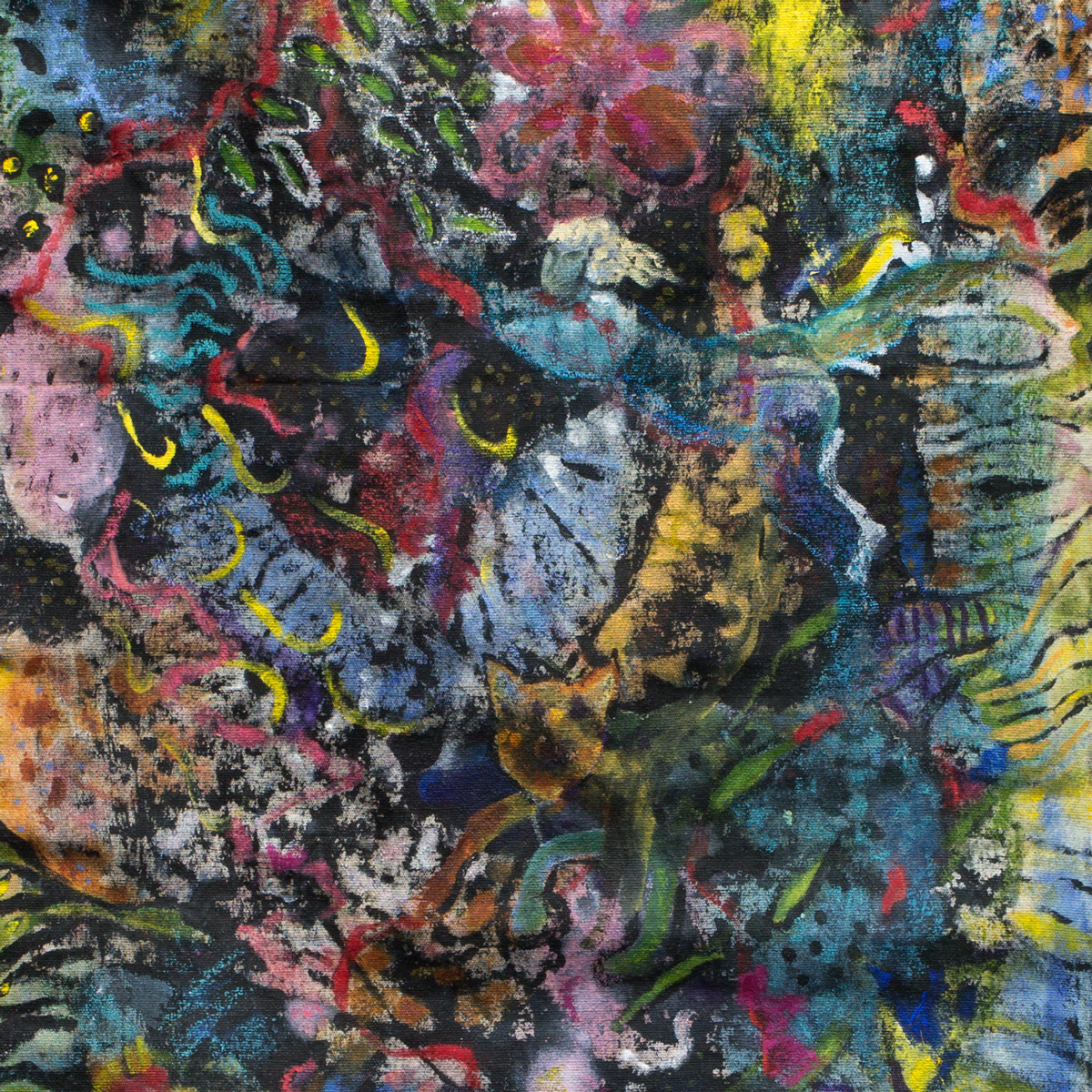
Early One Morning
In the summer of 2021 I was having a good time making rubbings of the texture of the ground on some old painter’s drop cloths I found balled up in a corner of our garage. The rubbings yielded a highly patterned black on white image that I could look at for hours. I decided to […]

Musing about River Naiads
These three river naiads are making their ways around obstacles in the river of life with its unexpected twists and turns, but nevertheless swimming on. When displayed together, these images convey the full impact of the strength, grace and resourcefulness of these swimmers.
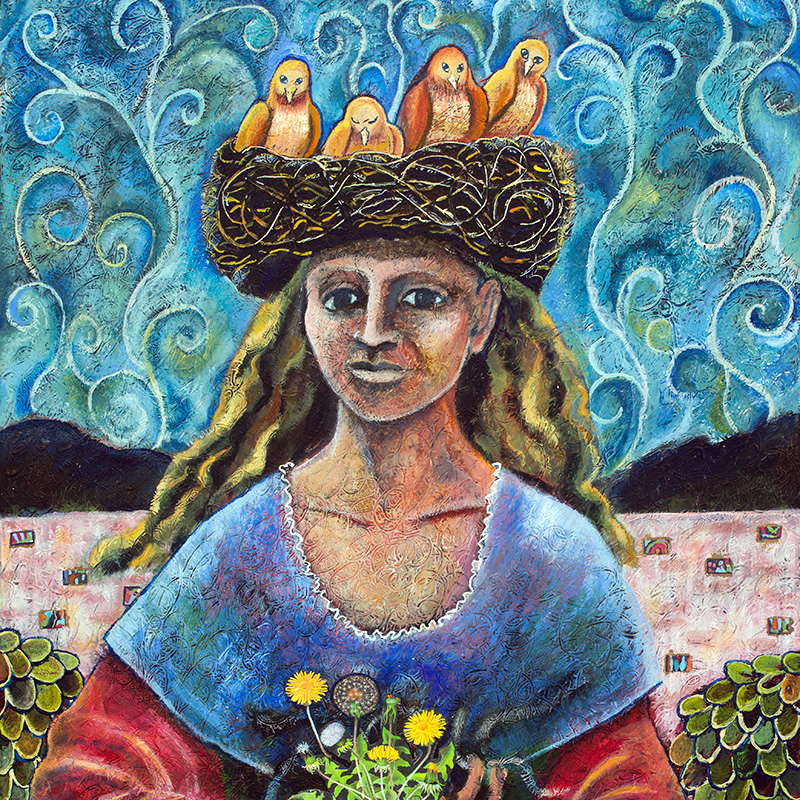
Do You Like Butter?
I have been reading a lot about the utter catastrophe that our unfettered and reckless use of herbicides and pesticides has wrought. To take just one example, the practice of using Monsanto’s Round-up to rid one’s patch of green grass of dandelions disregards all the cumulative collateral damage done to our environment. This woman holds […]
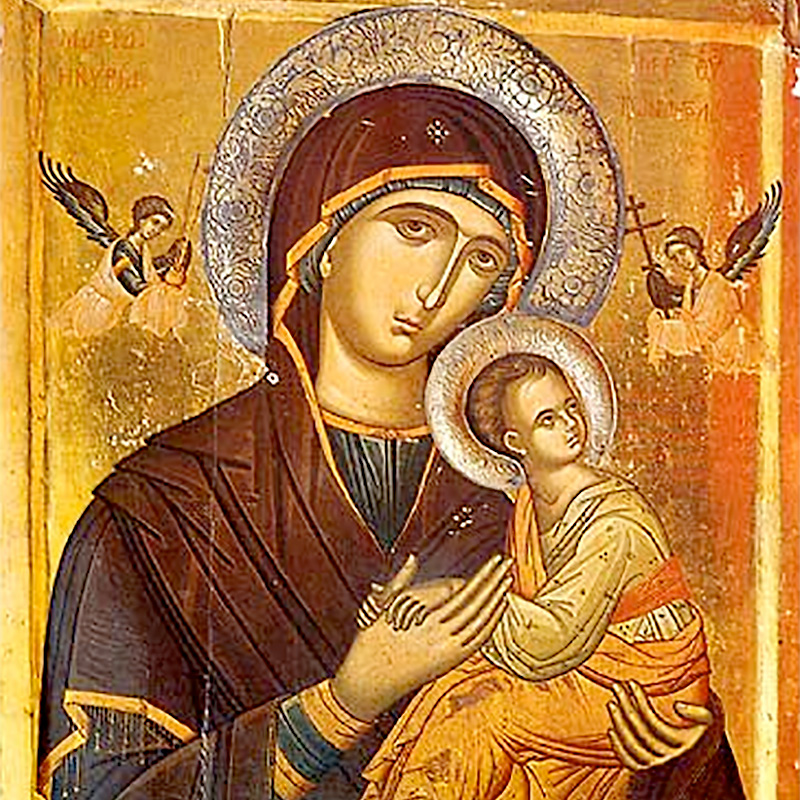
An Eco-Spiritual Madonna for Our Times
In the last two years, I have noticed that simple scenes of women intertwined with plants, animals or other earthly symbols are appearing in my work more frequently. I now understand this new work to be a series of visual meditations, work that helps us contemplate manifestations of the Divine Feminine. These portraits all feature […]
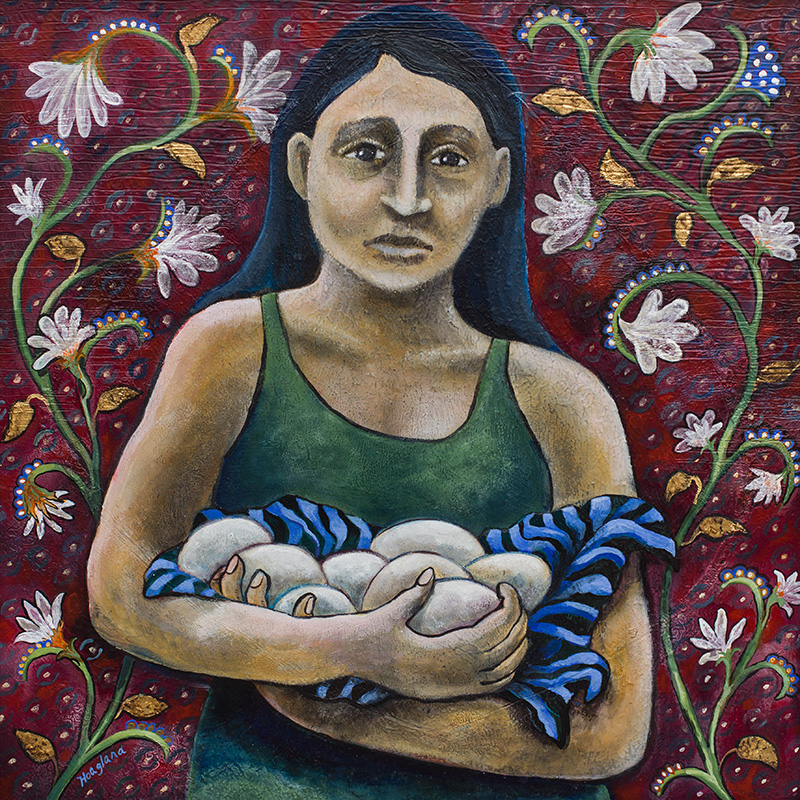
Musings about Refugee
In the past couple of years, the world has witnessed the tragic migration of refugees as they flee the destruction of their homeland and way of life. Those who flee must take only the most essential things with them. In this painting, the woman is carrying eggs, so fragile, but so essential to ongoing life. […]
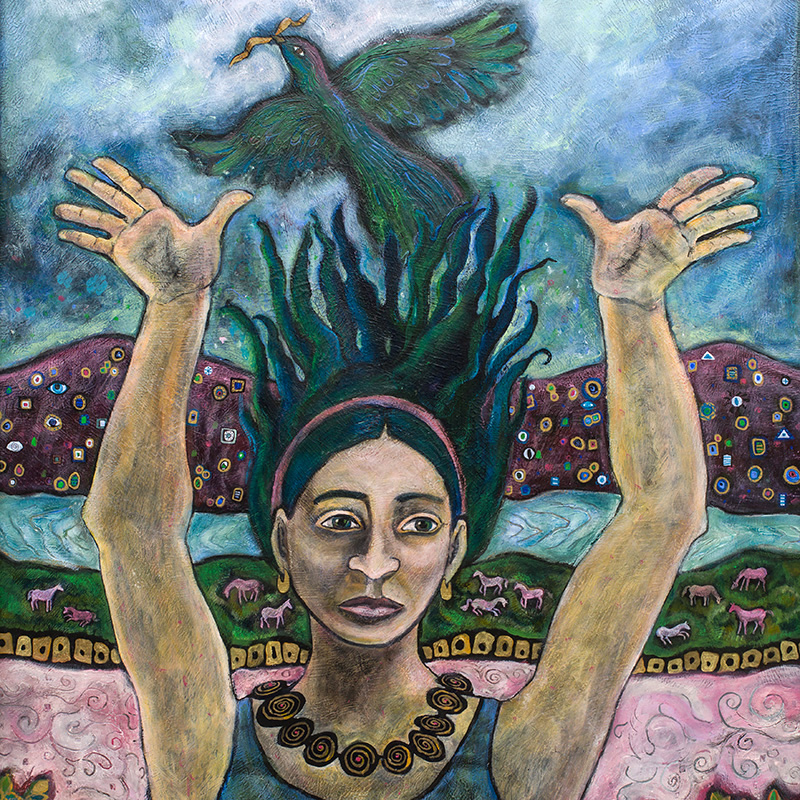
Musings about The Message
This painting changed many times throughout the course of being created. I didn’t know what was going on until the end. The woman is a keen witness to the activities on earth. She can see the logical consequences of our current world’s practices which value profit above all else—our industrial practices, use of fossil fuels, […]

Musings about One Way to Ride
I fell in love with horses early. When I was eight years old my father finally arranged for me to have riding lessons with Señor Martinez, the riding instructor at a college nearby. Unlike other riding instructors I knew about, he had us practice various balancing acts as our horses walked around the ring. Most […]
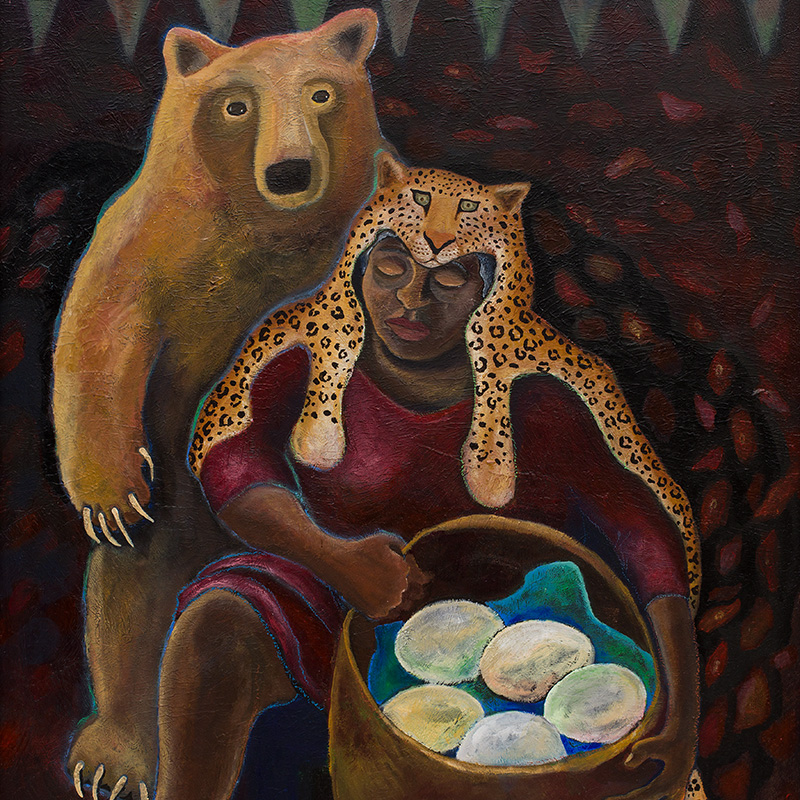
Musings about Basket of Eggs
This painting was the first of a long series of images that featured women carrying baskets or nests filled with eggs. Eggs represent new life. Each egg requires a certain amount of time necessary to develop to maturity. In this life, there are people—both men and women—who have a huge capacity and heart which encourages […]
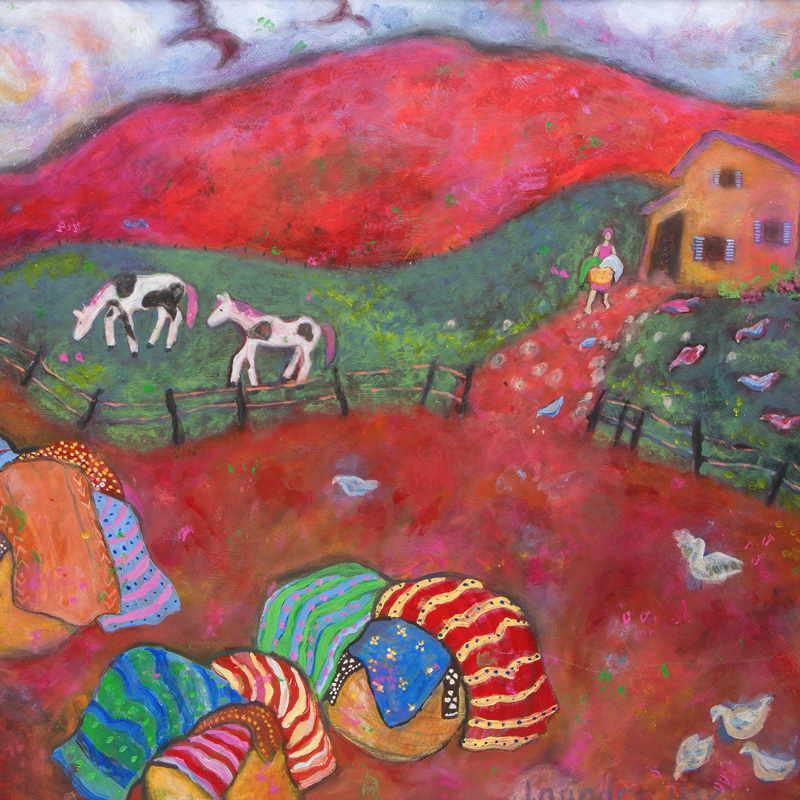
Musings about Laundry Day
No doubt I was doing a lot of laundry at this time and seeking a way to find more meaning in it. This image is another visual meditation on the beauty of fabrics— the materials in which we clothe ourselves and the world— that seeks to uncover a mythic meaning that lies beyond the practical […]
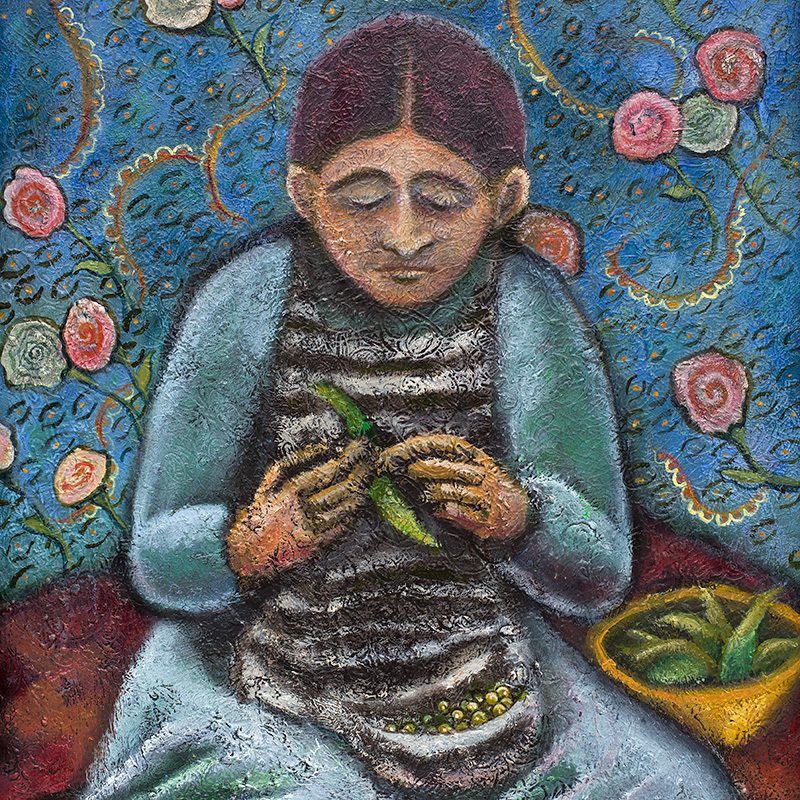
Musings about The Cook
While visiting a Zapotec village in the mountains of Oaxaca, I met a woman named Yolanda who did most of the food preparation for the families there. She cooked over a stone slab heated by a wood fire beneath it. She taught me to make a soup from the local guisantes, a kind of local […]
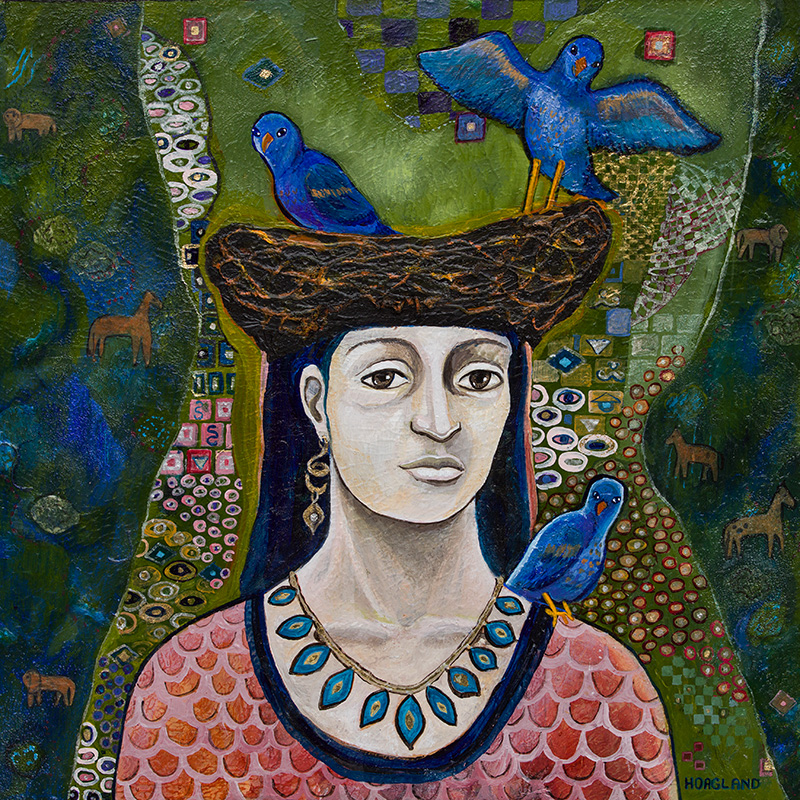
Musings about Birdbirds
Ghandi advised us to “Be the change you wish to see in the world.” This woman is wearing a nest on her head and providing safe shelter for these bluebirds. She is being the habitat that life needs to flourish. In this way she is actively joining the natural ecosystem these birds need to thrive. […]

Icons for a Sustainable World
There are many narratives we can tell to explain the nature of the world. We are all familiar with the Darwinian explanations of the world in terms of competition and survival of the fittest. This is one dynamic that empirically exists and we are all familiar with instances of this dynamic in our everyday lives. […]
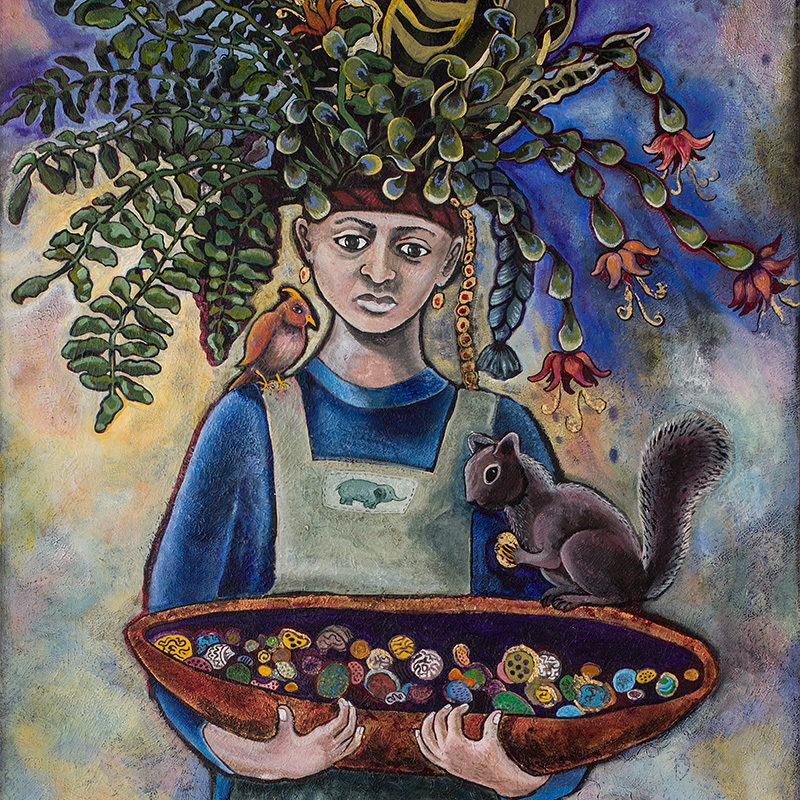
Musings about Offering
The idea of hybrid species really intrigues me, especially imaginary hybrids from different biological kingdoms. What would a creature who is part-plant and part-woman look like? And what special attributes would she have? This girl welcomes us to a land just over the hill which we cannot see. She is offering us seeds and nuts […]